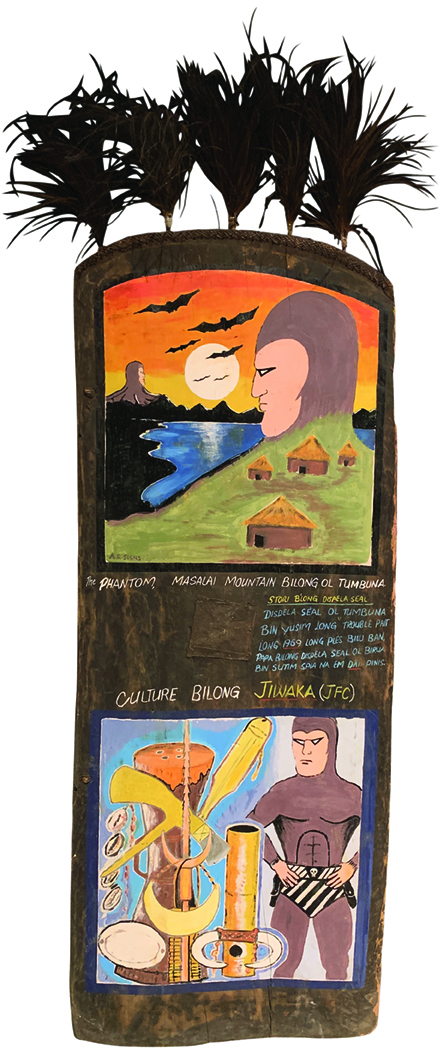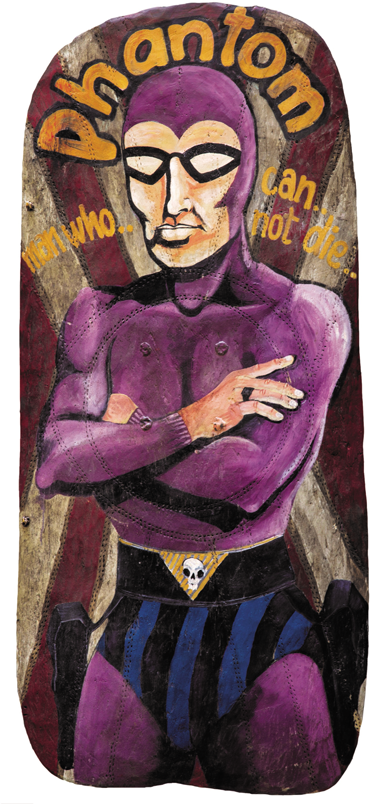In the second half of the twentieth century, an artistic tradition arose in the Wahgi Valley of the highlands of Papua New Guinea of painting traditional war shields with the image of the comic book superhero The Phantom. This derived from some seemingly inexplicable intersection of the age-old bellicose traditions of one of the most culturally remote areas of the world and twentieth-century comic book illustration, if not pop art—a phenomenon that art historian N. F. Karlins has referred to as pop tribal. The frequent text in English or in Tok Pisin on other examples—man ino save dai (man who cannot die) or man bilong pait (man of war)—only adds to the multicultural depth. Though these appear to be curiously syncretic objects to the Western eye, to the people of the Wahgi Valley they held deep meaning to the martial power of moral rectitude and the guidance of ancestral spirits.
A new book published in February 2021 by art dealers Chris Boylan of Sydney, Australia, and Jessica Lindsay Phillips of Toronto, Canada, is an exhaustive study of this tradition. Titled Man Who Cannot Die: Phantom Shields of the New Guinea Highlands, it features essays by a number of experts in the field, placing the shields within their historical, cultural, and cosmological contexts. A catalog section illustrates 105 examples from museum and private collections in North America, Europe, and the Antipodes, drawn from a research group of some 150 shields, which represent the majority of known examples.






